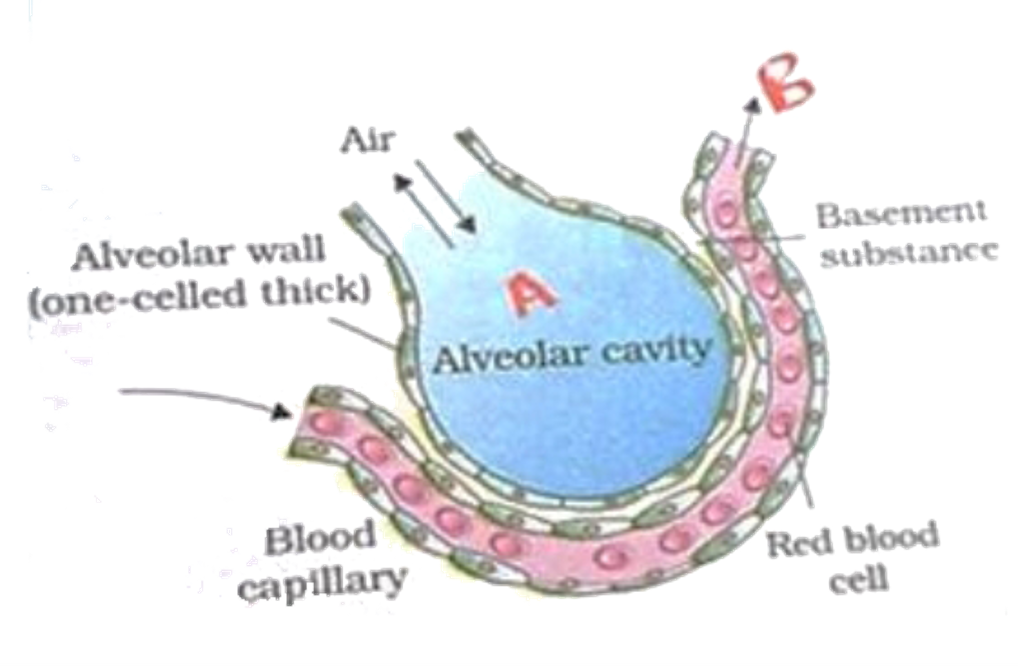At high altitudes the partial pressure of oxygen is less than that at the ground level. This leads to
A
low concentrations of oxygen in the blood and tissues
B
high concentrations of oxygen in the blood and tissues
C
release of dissolved gases and formation of bubbles of nitrogen in the blood
D
thickening of blood and tissues
Video Solution
Text Solution
The correct Answer is:A
At high altitudes the partial pressure of oxygen is less than that at the ground level. This leads to low concentrations of oxygen in the blood and tissues of people living at high altitudes or climbers.
|
Updated on:21/07/2023
Related Playlists
- BOOK - NCERT FINGERTIPSCHAPTER - SOLUTIONS EXERCISE - Vapour Pressure Of Liquid Solutions5videos
SOLUTIONS
- BOOK - NCERT FINGERTIPSCHAPTER - SOLUTIONS EXERCISE - MCQs2videos
SOLUTIONS
- BOOK - NCERT FINGERTIPSCHAPTER - SOLUTIONS EXERCISE - Expressing Concentration Of Solutions16videos
SOLUTIONS
- BOOK - NCERT FINGERTIPSCHAPTER - PRACTICE PAPER -3EXERCISE - Practice Paper 350videos
PRACTICE PAPER -3
- BOOK - NCERT FINGERTIPSCHAPTER - SURFACE CHEMISTRYEXERCISE - Assertion And Reason15videos
SURFACE CHEMISTRY
Similar Practice Problems
- Question 1 - Select One
The partial pressure of oxygen in the alveolar air is
A45 mm HgB95 mm HgC104 mm HgD110 mm Hg - Question 1 - Select One
Partial pressure of oxygen in the lungs is .
A100 mm HgB110 mm HgC40 mm HgD60 mm Hg - Question 1 - Select One
The partial pressure of oxygen in the alveoli of the lungs is
ALess than that in the bloodBLess than that of carbon dioxideCEqual to that in the bloodDMore than that in the blood - Question 1 - Select One
The partial pressure of oxygen in the alveoli of the lungs is
ALess than that of carbon dioxideBEqual to that in the bloodCMore than that in the bloodDLess than that in the blood - Question 1 - Select One
Among the following the partial pressure of oxygen is maximum in
Aalveolar airBaterial bloodCvenous bloodDexpired air. - Question 1 - Select One
What is the partial pressure of oxygen and carbon dioxide in atmospheric air ?
ApO2 159 mm Hg, pCO20.3 mm HgBpO2 104 mm Hg, pCO240 mm HgCpO2 40 mm Hg, pCO245 mm HgDpO2 95 mm Hg, pCO240 mm Hg - Question 1 - Select One
Why the partial pressure of CO2 is high at tissue-site?
ADue to saturation of O2 with HbBReleases of H+ at tissue siteCDue to metabolismDDue to dissociation of HbO2
Similar Questions
what is partial pressure of oxygen in systemic vein?
View SolutionThe partial pressure of oxygen at the site A and B in the following figure is
 View Solution
View SolutionA: At high altitudes (mountains), it is very difficult to stop bleeding from a cut in the body.
R : At high altitude the atmospheric pressure is less than the blood pressure inside the bodyView Solution

